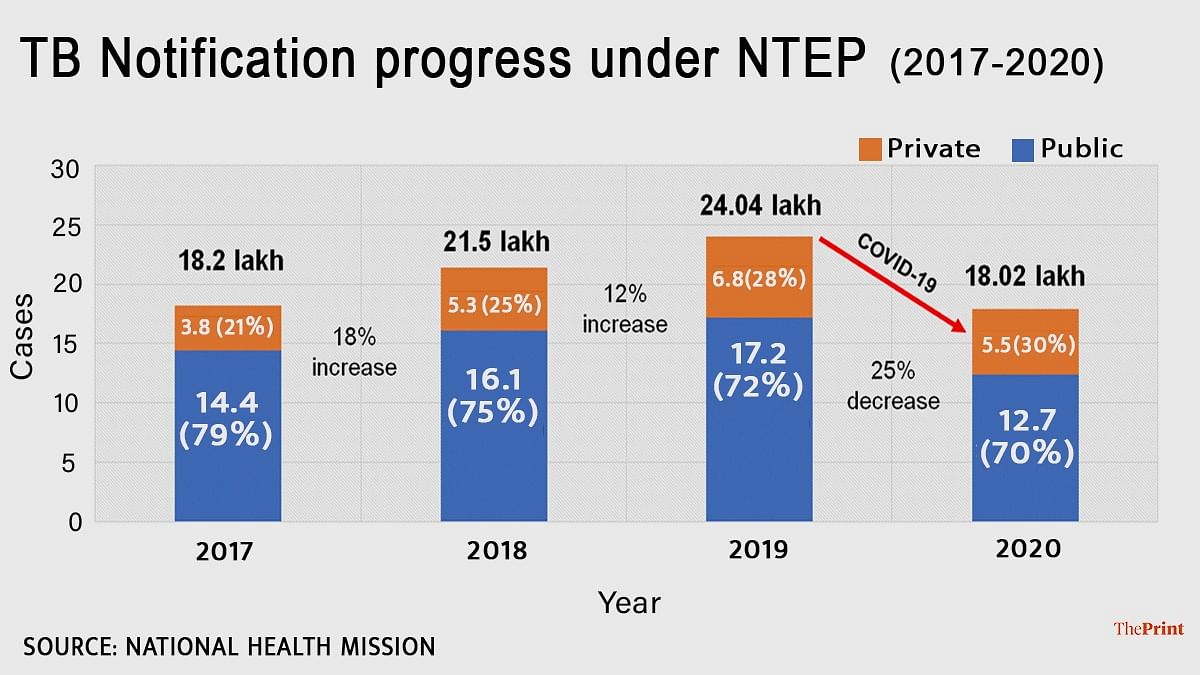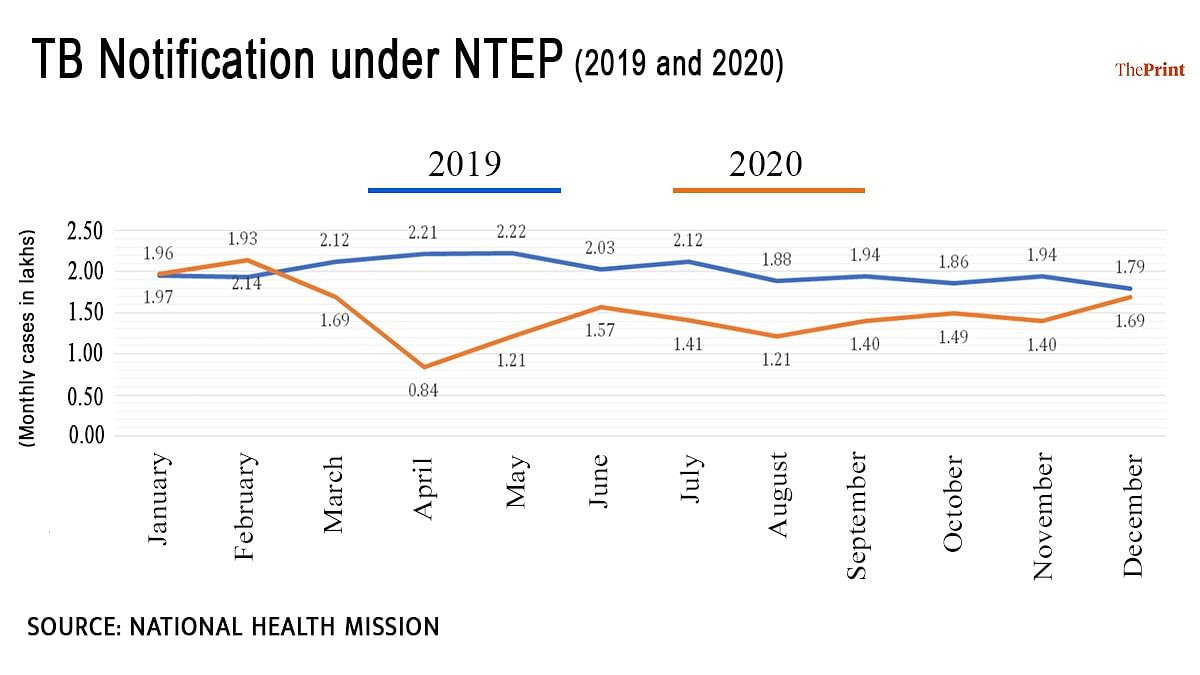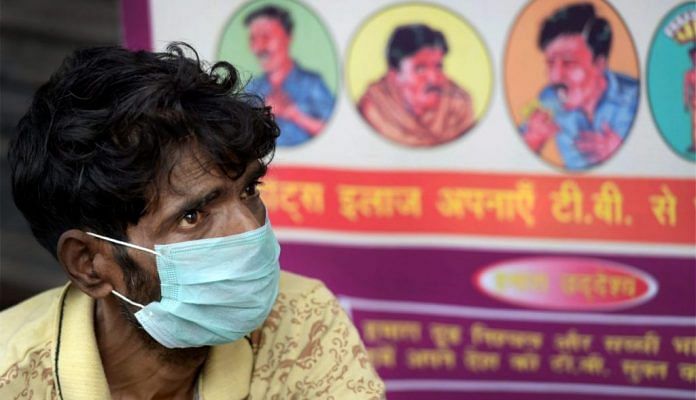New Delhi: Notification of tuberculosis cases in India reduced by 25 per cent between January and December 2020 because of the lockdown and diversion of resources for Covid-19 control measures, a recent analysis by the Ministry of Health and Family Welfare has found.
According to the analysis, 18.2 lakh TB cases were reported in India in 2017. That number increased by 18 per cent to 21.5 lakh in 2018.
In 2019, the number of cases reported was 24.04 lakh, a rise of 12 per cent. It reduced by 25 per cent to 18.02 lakh cases in 2020, the year of Covid-19 that was marked by a lockdown and efforts to combat the pandemic (see graph).

Of the total cases in 2020, 12.7 lakh were reported from the government healthcare sector and 5.5 lakh from the private sector.
These were the conclusions of the first comprehensive stocktaking exercise by the government to assess the impact of Covid-19.
This is the first time since the TB strategic Plan (2017-2025) came into effect that the notifications have dipped.
The 24th of March is observed as World TB Day.
In 2018, Prime Minister Narendra Modi had said India will meet the global target of eliminating the bacterial infection by 2025 — five years ahead of schedule.
The government has now put in place a detailed plan to make up for the losses and find active cases to ensure the gains of the last few years are not squandered.
Interestingly, while hospitals are reporting a reduction in incidence of other respiratory infections, especially those of the seasonal kinds because of use of masks and hand hygiene, such hopes are not very high for TB.
“Epidemiologically and theoretically that can happen for TB too,” a senior official in the government’s TB control department said. “But the problem is the TB bacteria can stay silent inside the body for such a long time that to break the chain of transmission and to sustain that over a period of time is very difficult.”
The National Strategic Plan for TB elimination describes TB, caused by the Mycobacterium tuberculosis bacteria, as India’s “severest health crisis”.
According to the plan, TB kills an estimated 4,80,000 Indians every year and more than 1,400 every day. It adds that India also has more than a million ‘missing’ cases every year that are not notified and most remain either undiagnosed or unaccounted and inadequately diagnosed and treated in the private sector.

Efforts to regain lost ground
The government now plans to start population-level screening for tuberculosis, especially among vulnerable categories such as people living with HIV or other comorbidities that make them immune-compromised in a bid to start ‘active case finding’.
For an infectious disease like TB, in which undiagnosed cases may become population-level super-spreaders, active case finding is a key control strategy.
According to the government’s plan, medical colleges across the country are being roped in for diagnosis of extra pulmonary TB. While the primary site affected by TB are the lungs, other parts of the body such as lymph nodes, bones or the brain can also be infected by the bacteria.
TB services are now also being decentralised at the level of the Ayushman Bharat health and wellness centres and intensified case finding efforts will also be undertaken in clinics that cater to various non-communicable diseases.
Government communication on TB will also emphasise the importance of Covid-appropriate behaviour in keeping the disease at bay. Additionally, Covid-negative patients are also being tested for TB as the two diseases have similar symptoms.
Notifications by the private sector will be incentivised and states have also been asked to put in place a surveillance mechanism that will flag uptake of Schedule H1 drugs, of which a very important component are anti-TB drugs.
This would ensure both in tracking cases that are not known to the system and also to ensure drug compliance to prevent emergence of drug resistant varieties. The long course of TB medication often makes patients drop out and leads to drug resistant TB bacteria mutants.
Lakshadweep is TB-free
In small good news that has emerged out of the recent stock-taking, two provinces — the union territory of Lakshadweep and Budgam district in Jammu and Kashmir — have been declared free of TB.
Diu has managed to bring down the incidence of the disease by 60 per cent and Lahaul-Spiti in Himachal Pradesh, Kolhapur district of Maharashtra, Parel (ward) of Mumbai and the West Tripura district have brought it down by 40 per cent.
(Edited by Arun Prashanth)
Also read: 12 months, 12 lessons: What India learnt about Covid in a year since lockdown began



